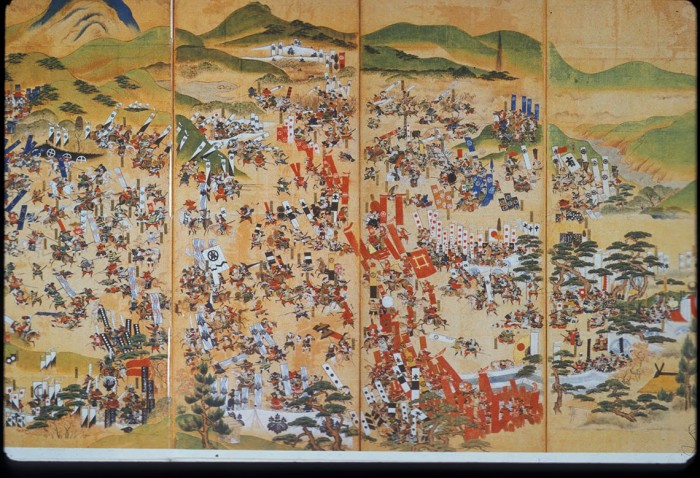
“Ronin” is the Japanese term for a masterless samurai and is written with the characters for ‘floating’ and ‘man’, i.e., a warrior adrift with no lord to serve nor stipend for income. During the late stages of the Warring States period and early years of the Edo period, many samurai were thrown out of work when their daimyo or feudal overlord lost his status because of defeat, had his domain taken away or reduced in size, or was relocated to a smaller domain. With no master, the ronin and his family had to seek alternative employment. At the time of the Battle of Sekigahara, it is estimated that there were as many as 400,000 ronin.
The problem with these men was that they were armed and out of work. They had a reputation for getting into trouble; for joining local squabbles, for turning to banditry, for falling into the world of theater and entertainers. They also flocked to join whoever raised the battle flag and needed additional fighters to swell his armies. In short, they were a source of social and military instability. For example, when the Tokugawa shogunate decided to attack and destroy the Toyotomi forces at Osaka in 1615, as many as 100,000 ronin are thought to have joined the Toyotomi. Even though a similar number probably joined the Tokugawa forces, the existence of such a large number of men with swords and no anchor encouraged the shogunate to limit the number of ronin by refusing permission for samurai to abandon their masters and become ronin. With peace and stability, the number of new ronin decreased as the economic need to earn a living forced many to abandon their swords to take up farming, commerce, or manufacturing. By the second half of the 17th century, the problem had largely disappeared.
At the end of the Edo period, ronin became prominent once again. Many of the opponents of the Tokugawa shogunate adopted ronin status so that they were free from the constraints of loyalty to their lord and could roam the length and breadth of Japan acting against the Tokugawa in concert with like-minded individuals. Some daimyo even ordered a few retainers to become ronin so that the anti-Tokugawa movement could be supported without incriminating and endangering the domain.
In the 20th century, the word was used to refer to adventurers and nationalists who were active in promoting Japanese interests and expansionism on the Asian continent: these were the China ronin or the Asia ronin. After World War II, the term became restricted to students who failed their university entrance examinations and decided to study further with the hope of passing the exams and entering a university the following year; they are not in a regular high school and are therefore “masterless”.
Ronin are a favorite subject of romantic literature. Their lives were exceptional, especially during the stability of the Edo period, and could be used to explore themes like loyalty, love or the plight of an able but low born individual. One of the most famous stories about them is the ‘Forty-seven Loyal Ronin’ who avenged their lord’s death by killing his enemy. Since theirs was an illegal vendetta, they were ordered to commit suicide and were buried at Sengakuji temple near Shinagawa train station in Tokyo, about two miles beyond the end of the Nakasendo where their master was also buried.

